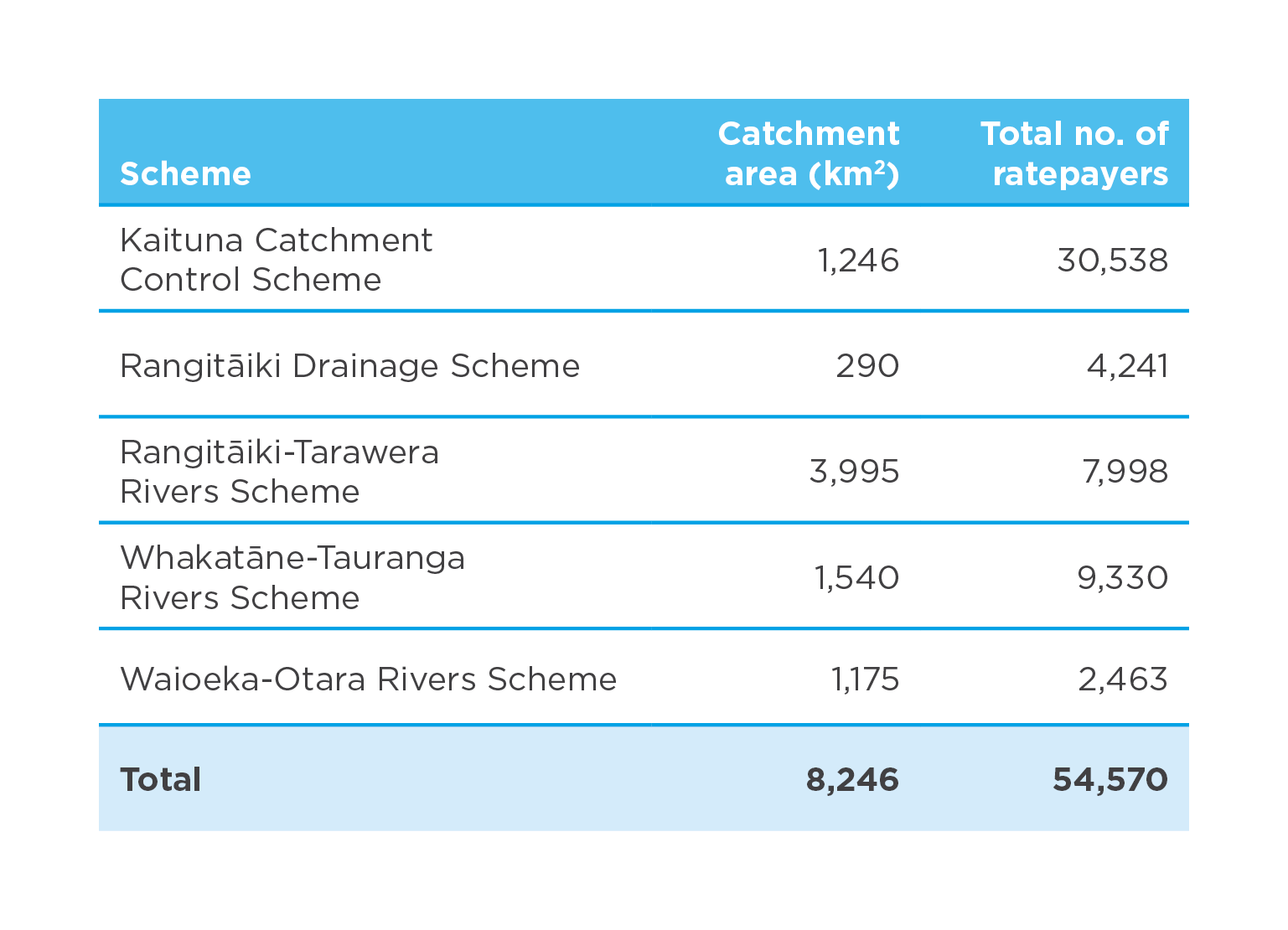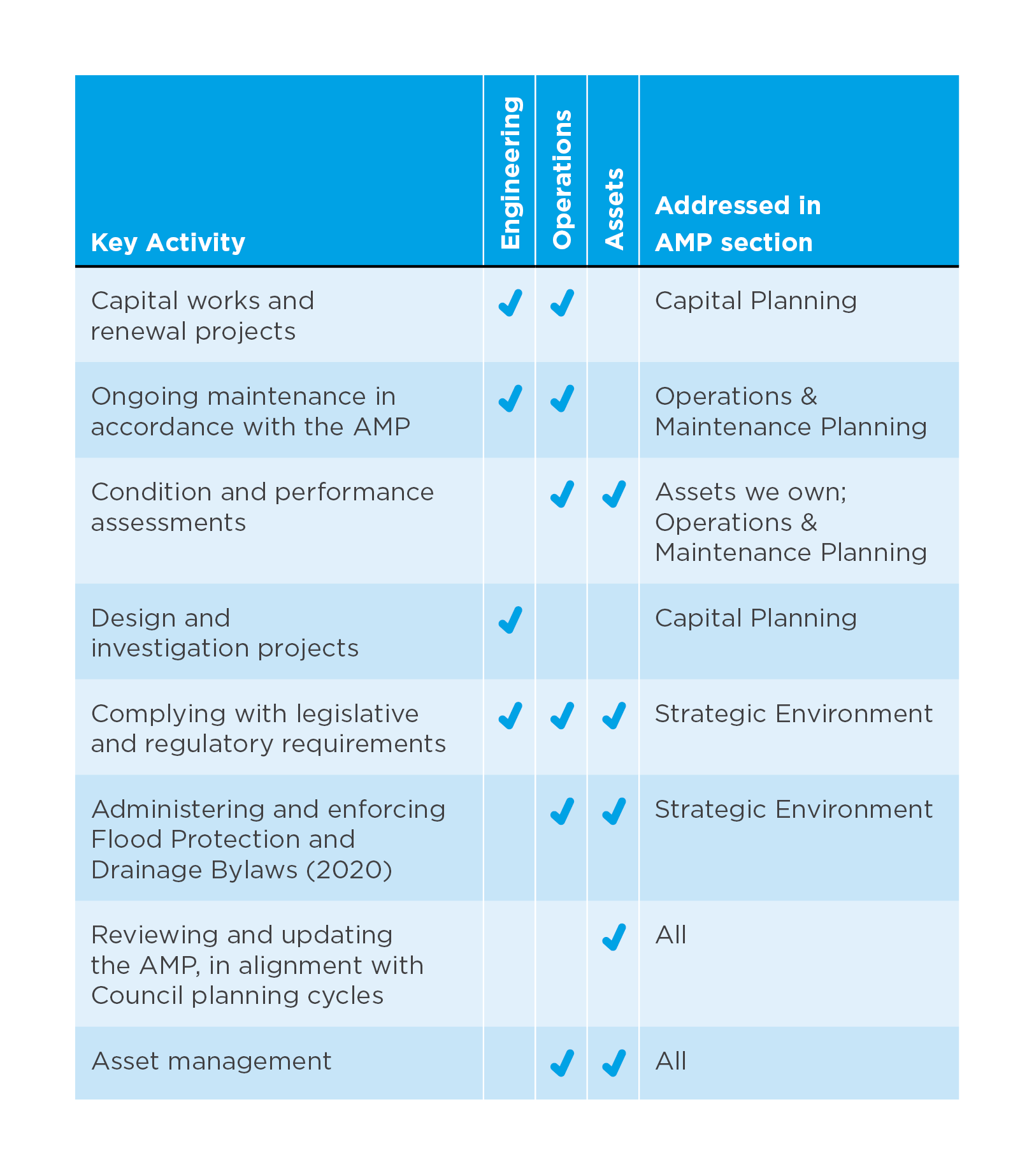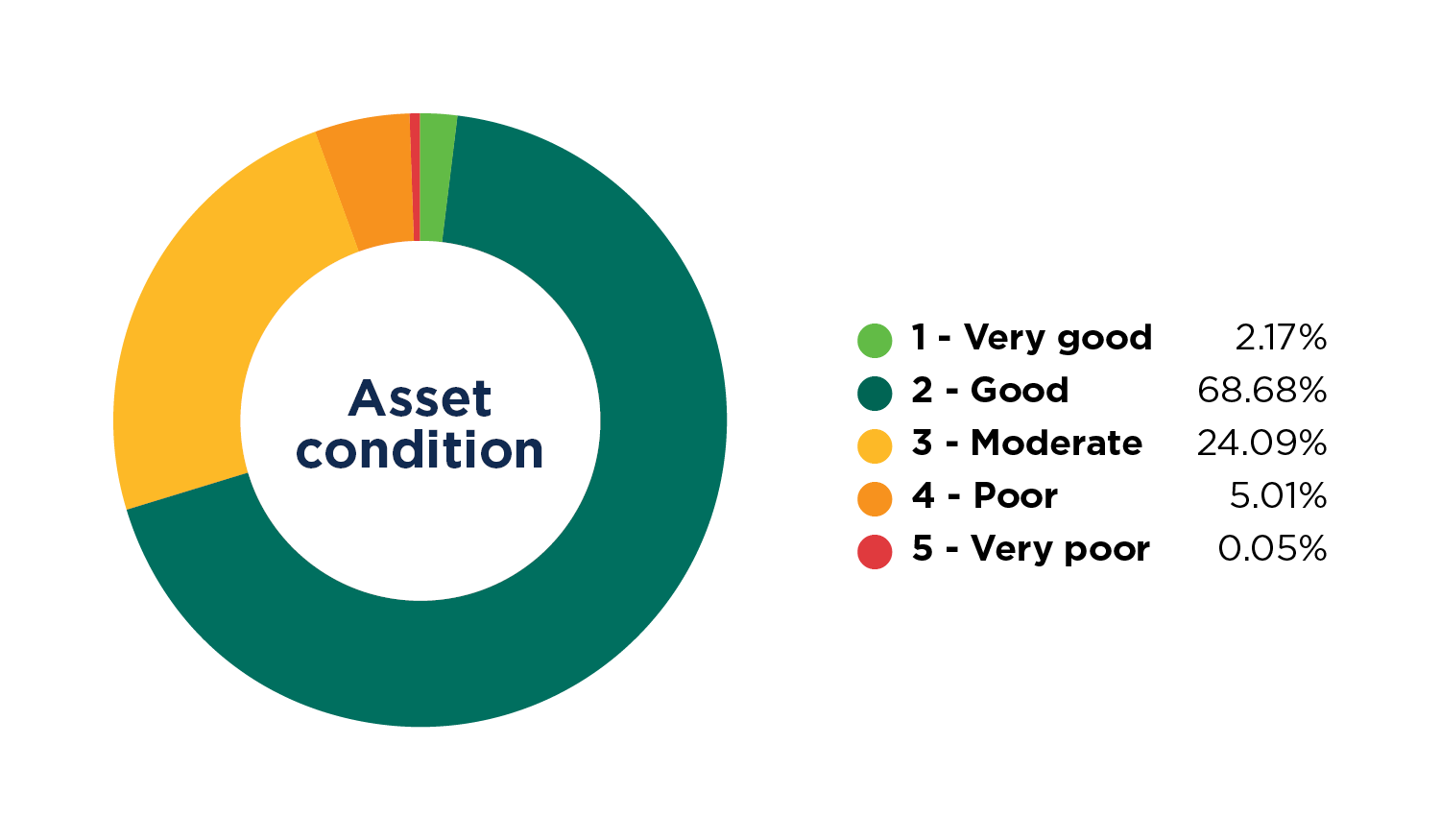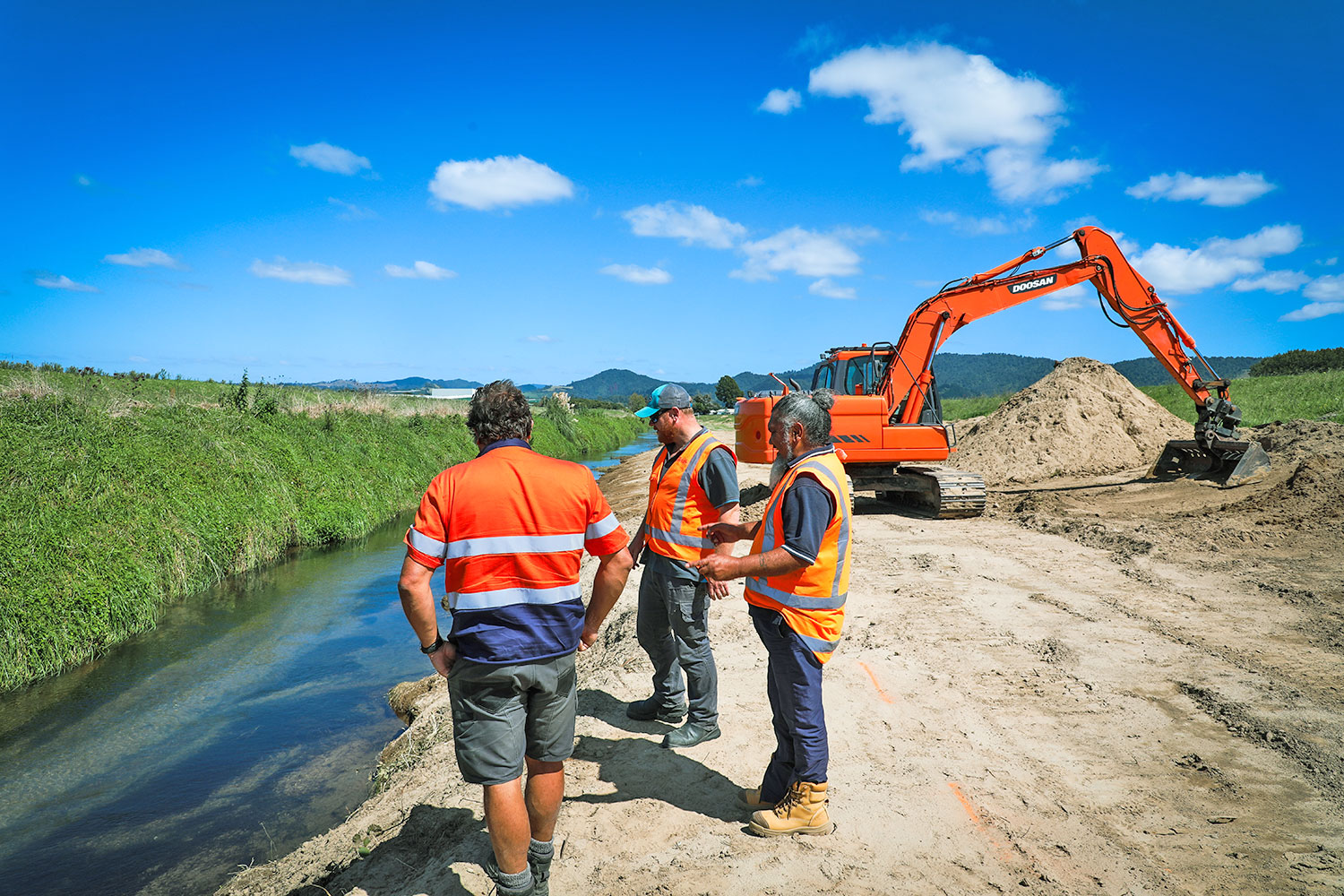Below is a summary of the Rivers and Drainage Asset Management Plan (AMP) for 2024 – 2074.
It outlines a 50-year strategy for how we manage and maintain flood protection and drainage assets (such as stopbanks, floodgates, pump stations and spillways), which are collectively valued at $438M (as of 30 June 2024).
At the bottom of this page, you will find links to the Executive Summary (40-pages) and the full Rivers and Drainage AMP.
Activity and Asset Overview (Part 4)
Regional Council is responsible for the provision and management of five major schemes within its regional boundaries. The schemes provide flood protection and drainage for 54,570 targeted ratepayers.

It is a function of Regional Council to provide flood protection and land drainage to its communities. We have a range of tools and mechanisms it can use through legislation, such as the Soil Conservation and Rivers Control Act 1941, the Local Government Act 2002, the Land Drainage Act 1908, the Rangitāiki Land Drainage Act 1956, and other statutes.
Regional Council meets this responsibility through the management of its rivers and drainage schemes, and the various infrastructure assets within these schemes.
These assets play a key role in fulfilling our strategic direction and community outcomes, which are outlined in the Long Term Plan (LTP) 2024 – 2034.

Asset Condition and Performance (Part 4, Section 5)
Asset condition is a measure of the physical state of an asset, which is visually assessed by staff and contractors on a regular basis. The performance of an asset relates to its ability to support the delivery of agreed levels of service.
Understanding condition and performance is integral to risk management processes. By closely monitoring condition and performance, we are better equipped to identify and mitigate any risks in a timely manner.

Levels of Service (Part 6)
Levels of Service (LoS) incorporate the service element of delivering the Rivers and Drainage activity in conjunction with measurable targets to determine how effectively the activity has been delivered. Performance against service level delivery is reported to the community and Regional Council each year.
Regional Council developed the LoS for the Flood Protection and Control Activity through the LTP and AMP processes. The aim is to provide affordable service levels. This is achieved through community consultation, customer research, and service level reviews.

Future Demand Drivers and Management (Part 5, Section 11)
Planning for change in growth and demand provides an economically sustainable pathway to meet the needs of the region. The continued provision of rivers and drainage services are essential to helping achieve Regional Council’s community outcomes, particularly for healthy and safe communities.
One of the strategic approaches we are using to plan and adapt for future demand is the Rivers Scheme Sustainability Project (RSSP). This is about considering the long-term sustainability of rivers and drainage schemes, which includes reviewing current levels of service provided by the schemes, determining the economic value added by the schemes, and assessing flood risk and the level of community acceptance of different levels of flood risk (as well as their willingness to pay for flood protection).
Capacity Reviews (Part 7, Section 6)
In recent years, we have completed capacity reviews of all the major rivers schemes, with the exception of the Whakatāne-Tauranga Rivers Scheme (upstream of the Whakatāne township), and some upper Kaituna catchments that are nearing completion.
Capacity reviews confirm the current capacity of flood protection networks and identify work required to ensure assets continue to be fit for purpose with climate change induced increases in flood flows. The capital programme identifies the work proposed to ensure assets continue to achieve the required levels of service.



